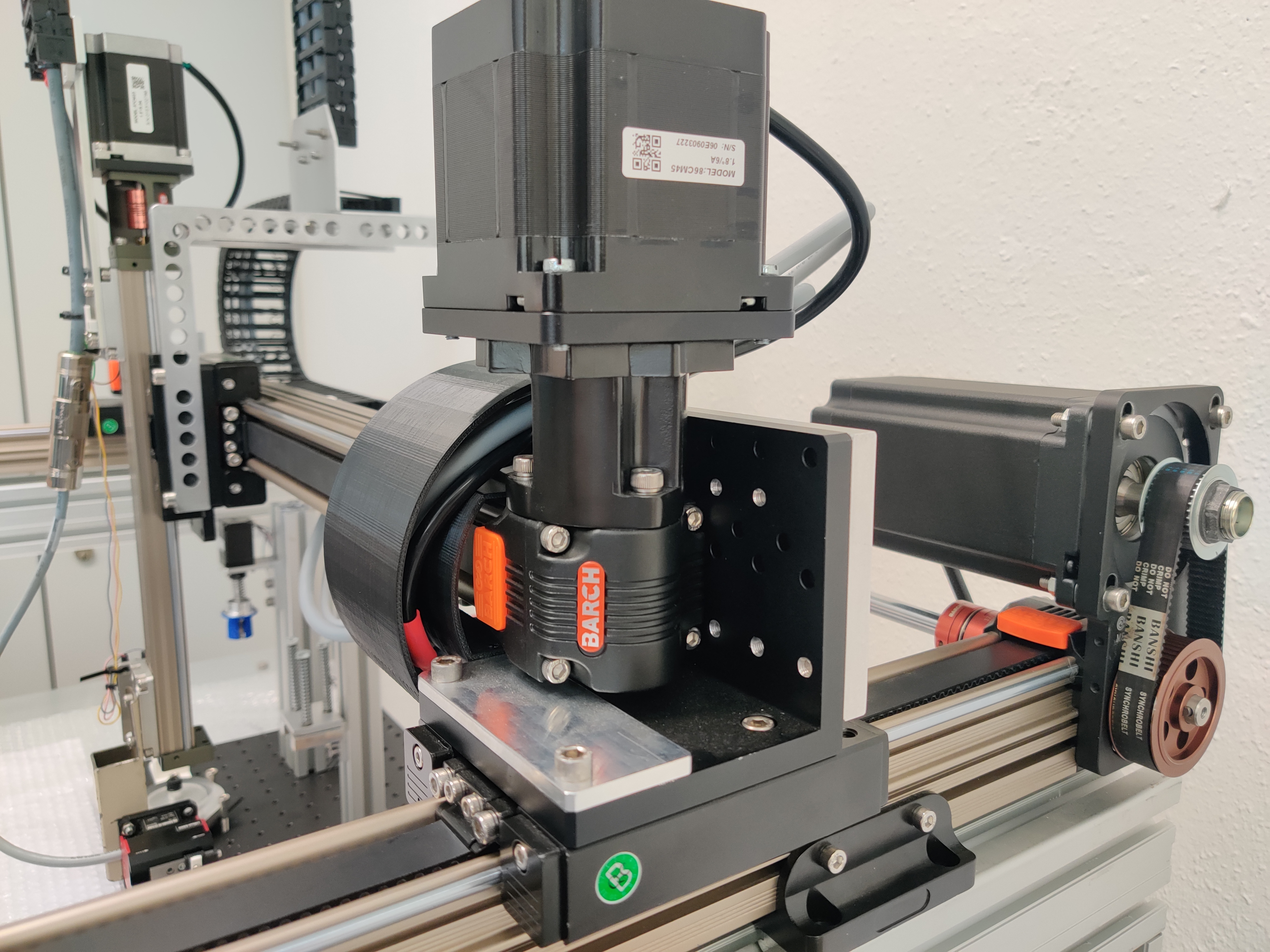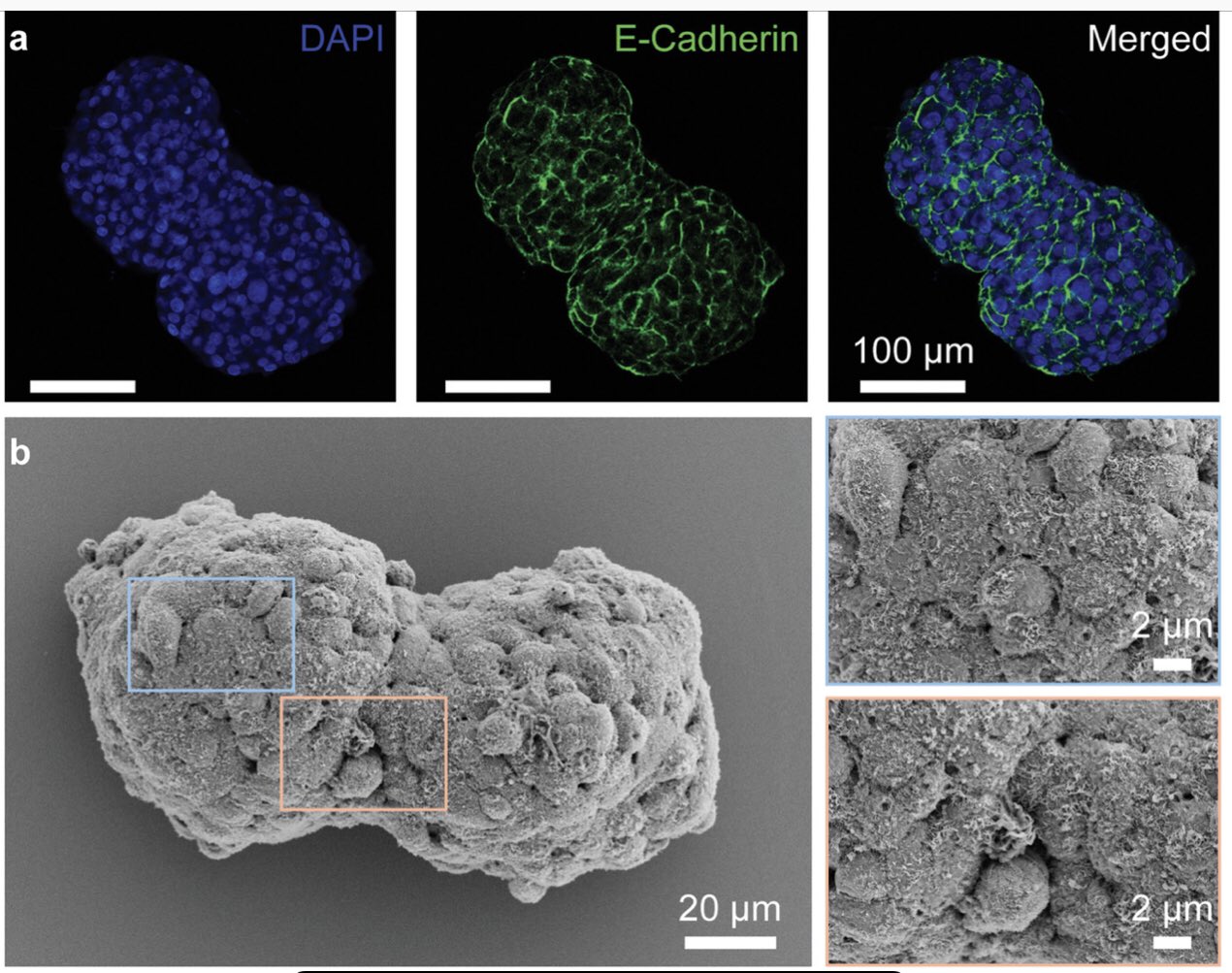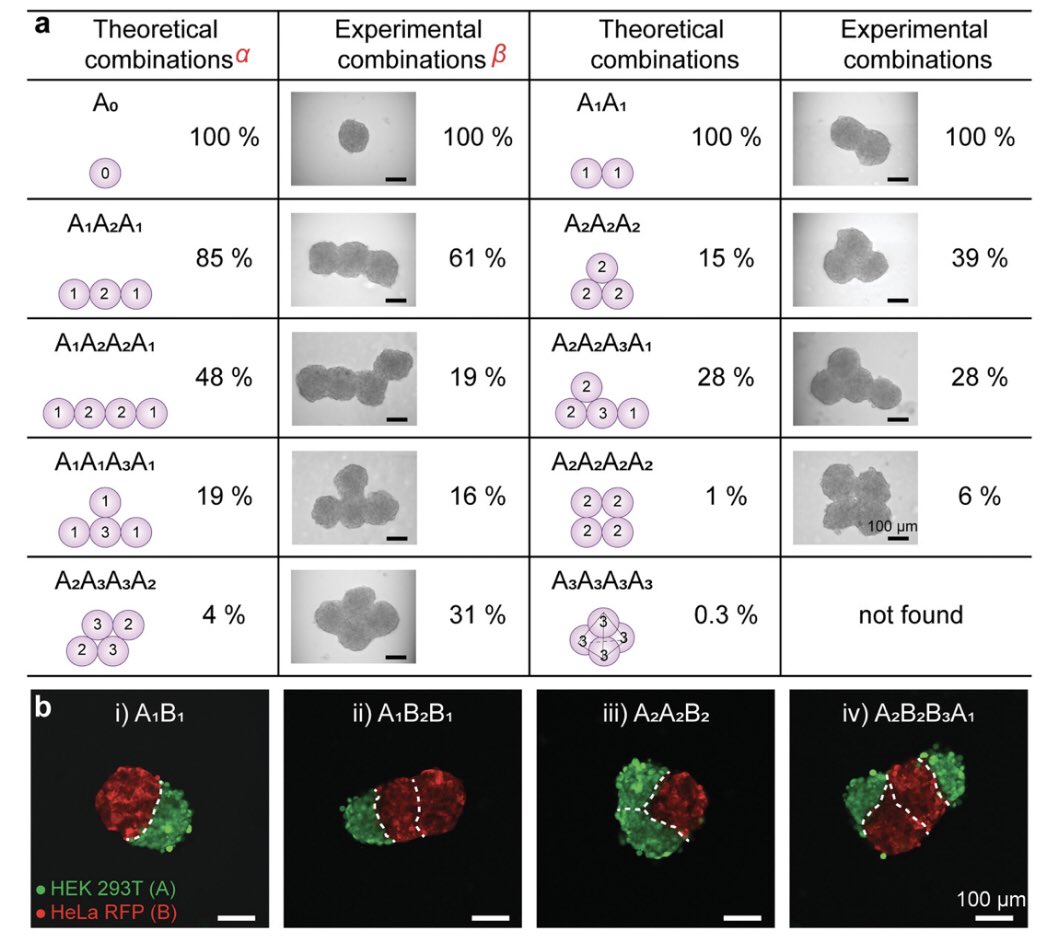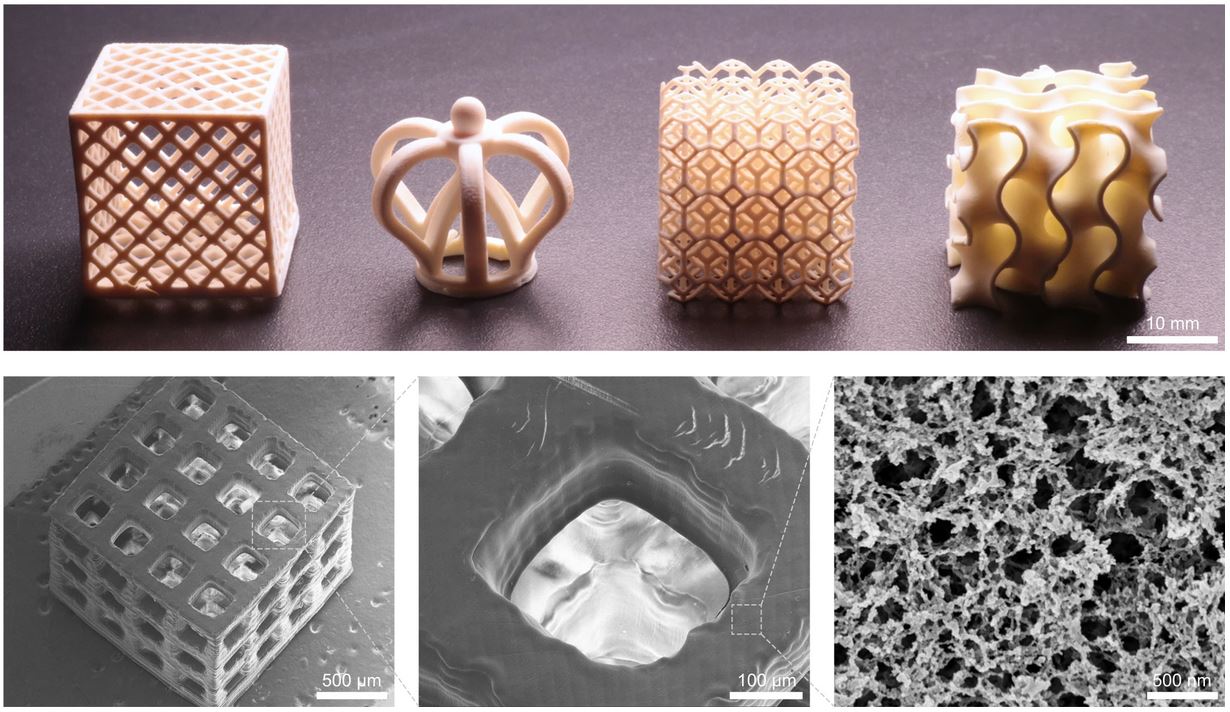News
August 2021
- Automated chemical synthesis: reliable production and rapid knowledge gain
KIT Invests About Four Million Euros in Facility for Automated Synthesis - Efficient processes to accelerate the development of innovative materials
 The automated plant will produce new materials for drug discovery and materials science through a combination of established equipment and open hardware components. (Foto: Patrick Hodapp, KIT)
The automated plant will produce new materials for drug discovery and materials science through a combination of established equipment and open hardware components. (Foto: Patrick Hodapp, KIT)
One of the most modern infrastructures for automated process control in chemistry is being built by the Karlsruhe Institute of Technology (KIT) together with BASF: The facility will initially produce new substances in parallel for applications in fields ranging from biology to materials science. In the long term, the facility will also enable a high-throughput process for chemical reactions. KIT is investing about four million euros in this project. The facility is located in the Karlsruhe Nano Micro Facility (KNMFi) and is open to internal and external scientists.
The development of automated facilities for chemical reactions to produce new materials for various applications in biomedicine, pharmaceuticals, electronics and many other fields is the goal of scientists worldwide. "Such synthesis plants allow chemical reactions to be carried out in a reproducible and standardized manner thanks to automated processes without exposing humans to chemicals," explains Professor Stefan Bräse, director at KIT's Institute of Biological and Chemical Systems (IBCS). "In addition, automated processes increase the throughput of reactions and thus the efficiency of research projects. This leads to new findings more quickly. “
Over the next two years, KIT will invest around four million euros in the development of a plant for the automated synthesis of new chemical substances.. The facility will be located at KNMFi to provide interested internal and external researchers with permanent access to one of the most modern infrastructures for automated process control in chemistry. As a strategic partner, BASF will run projects in the facility to identify for example new active ingredients for agriculture.
Modular design facilitates future expansions
This project combines several projects prepared by researchers in the working group of Professor Stefan Bräse and other KIT scientists. Wherever possible, the system will integrate components of free hardware and software to enable transparent development and later use also by other researchers. In addition, the individual components of the system will be assembled in a modular way so that future extensions can be realized in an uncomplicated way. KIT is involved in various consortia of the National Research Data Infrastructure (NFDI), especially also in NFDI4Chem, which specializes in chemistry. Close coordination with the consortia and implementation of the software and standards developed in NFDI4Chem within the facility will ensure long-term sustainable research and promote the provision of research data according to established best practice models.
Process control, robotics, software development and design work together
Initially, the synthesis plant will be geared to projects in organic synthetic chemistry: It will produce small organic molecules on a scale of around ten milligrams to several hundred milligrams, for example for chemical intermediates or active pharmaceutical ingredients. In the future, however, the facility will also be able to be used flexibly and carry out reactions on a small scale so that researchers can investigate many reactions simultaneously in a parallelized process. For both use cases, BASF brings extensive expertise to the project as it is already running an automated, high throughput platform at its global headquarters in Ludwigshafen, Germany. "We are very much looking forward to working with the KIT groups involved" says Andy Wieja, Team Leader Combinatorics & Thermal Characterization at BASF. "The development of new technologies at KIT will provide new impulses for synthesis projects and process automation at BASF to accelerate research and development for future innovations. “
The project brings together experts in process control, robotics, software development and design to combine state-of-the-art technologies and established processes. Further partners from research as well as from industry are welcome.
Further information about the Institute of Biological and Chemical Systems - Functional Molecular Systems (IBCS-FMS): https://fms.ibcs.kit.edu
Details of the Karlsruhe Nano Micro Facility (KNMFi): https://www.knmf.kit.edu
Information on the National Research Data Infrastructure (NFDI): https://www.nfdi.de
Being “The Research University in the Helmholtz Association”, KIT creates and imparts knowledge for the society and the environment. It is the objective to make significant contributions to the global challenges in the fields of energy, mobility, and information. For this, about 9,600 employees cooperate in a broad range of disciplines in natural sciences, engineering sciences, economics, and the humanities and social sciences. KIT prepares its 23,300 students for responsible tasks in society, industry, and science by offering research-based study programs. Innovation efforts at KIT build a bridge between important scientific findings and their application for the benefit of society, economic prosperity, and the preservation of our natural basis of life. KIT is one of the German universities of excellence.
Link to the KIT press release: https://www.kit.edu/kit/english/pi_2021_072_automated-chemical-synthesis-reliable-production-and-rapid-knowledge-gain.php
January 2021
- Materials Research: The Next Step in 3D Printing Processes
KIT Researchers Expand Possibilities with New Functional Materials
3D printing can be used to create three-dimensional objects layer by layer, and offers particular opportunities for the production of complex objects. However, 3D printing has not yet been suitable for the production of large structures with many pores in the submicrometer range. KIT scientists are now looking into new methods that combine the advantages of 3D printing with digital light processing and phase separation.
A submicrometer-scale porous structure could thus be transformed into macroscopic objects with unique properties, including similarities to biological interfaces, permeability, and extremely large surface area. "This is essential for adsorption, separation, sensor, or biomedical applications, among others," explains Pavel Levkin of KIT's Institute of Biological and Chemical Systems, who reports together with Britta Nestler of the Institute of Applied Materials and Martin Wegener of the Institute of Applied Physics in the journal Nature Communications.
"New applications are thus made possible, the functionality of the material is extended into the nanoscale, because the surface is very important," Levkin said. The researchers are demonstrating the possibility of creating 3D structures with highly complex geometries and pore sizes ranging from 100 nanometers to 1000 micrometers in the 3D Matter Made to Order (3DMM2O) cluster of excellence at KIT and Heidelberg University.jwa, 01/19/2021
Link to the KIT press release: https://www.kit.edu/kit/28328.php
December 2020
- Have a look at our newest Advanced Materials paper on "Assembly of Multi‐Spheroid Cellular Architectures by Programmable Droplet Merging". This is a very interesting method to make arrays of complex multi-spheroid architectures (microtissues) by fusing nanoliter droplets containing single spheroids together. Double spheroids or even up to 4 spheroids can be fused together in a controlled way. Different cell types can be combined in such structures (see pictures below).
I believe it will be very useful for tissue engineering applications, studying cell-cell interactions, cell signaling, cell experiments in 3D, etc. Congratulations to Haijun!
https://doi.org/10.1002/adma.202006434


February 2020
 Congratulations to Maximilian Benz for winning the Carl-Roth-Förderpreis of the German Chemical Society (GDCh) for his work on the miniaturization of chemical synthesis and biological experiments. [ Link ]
Congratulations to Maximilian Benz for winning the Carl-Roth-Förderpreis of the German Chemical Society (GDCh) for his work on the miniaturization of chemical synthesis and biological experiments. [ Link ]
July 2019
- A Turbochip for drug development [ german ] [ PDF ] [ Original Publication ]


